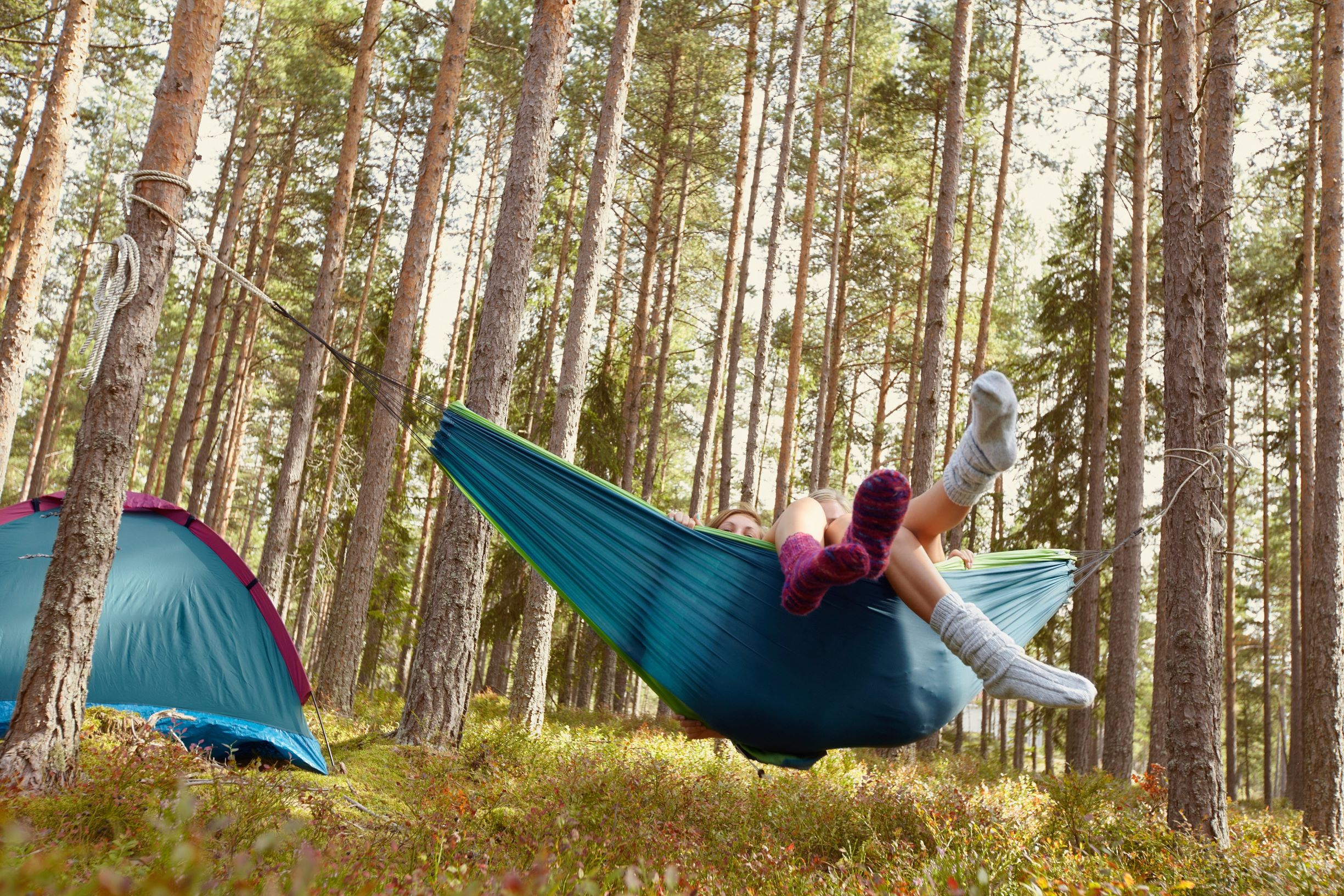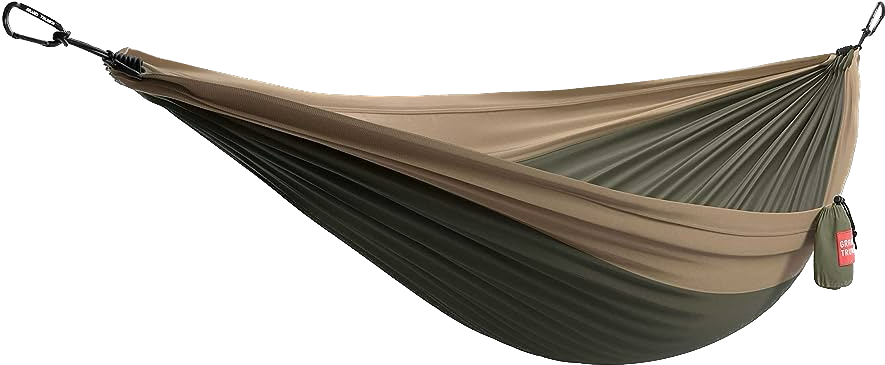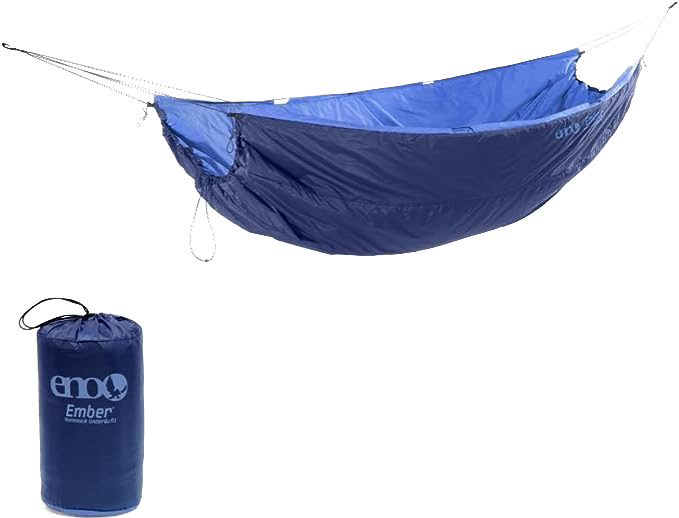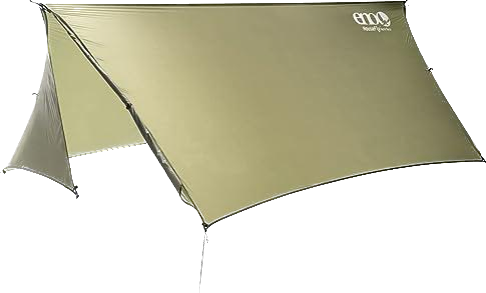Imagine this: you’re planning your next camping trip, and you’re faced with the age-old debate: hammock or tent? Both options have loyal followers, but is there one that’s truly the safer, more comfortable, and more practical choice? In this blog post, we’ll explore the pros and cons of hammock and tent camping, covering safety considerations, comfort, sleep quality, gear, and accessories, as well as practicality and limitations. One question we will address is: “Is hammock camping safer than tent camping?” In summary, here’s what we’ve found:
Hammock camping provides more safety benefits compared to tent camping. By elevating you off the ground, hammocks avoid the majority of issues tents face with ground-based wildlife and insects. You can also attach a rain fly or underquilt to help protect you from the wind and rain.
Choosing Between a Tent and Hammock for Camping: Which Offers a Safer Experience?
Safety is a top priority when heading out into the great outdoors. The hammock tent debate has been one that has been going on for years. When choosing between a hammock or tent for camping, it will come down to personal preference and the circumstances of your camping trip. For example, if you’re going on a long backpacking trip and want to pack light, a hammock will be your best choice. Contrastly, if you’re wanting to have a more stationary camp and want to feel more enclosed in a shelter, the tent will be your ideal choice.
Both hammocks and tents offer unique advantages and disadvantages.
Hammock camping provides a comfortable off-ground experience, reducing contact with wet ground, insects, and other critters roaming the ground. On the other hand, tent camping offers a traditional shelter with more enclosed protection against the elements and potential wildlife encounters. The decision ultimately comes down to personal preference and the specific circumstances of your camping trip.
I do want to point out that no camping setup is foolproof, and safety relies heavily on the camper’s knowledge and skills. Properly setting up your hammock or tent, being aware of your surroundings, and using appropriate gear are all crucial factors in ensuring a safe and enjoyable outdoor experience. Let’s dive into a few different factors when considering which is safer and which may provide an overall better experience.
Is hammock camping safe from animals?
When it comes to safety from animals, hammock camping can be just as secure as tent camping, provided you set it up correctly. The key is to choose strong, reliable supports from which you’ll attach your hammock straps. Look for large, healthy trees to uphold your weight and suspend you off the ground. Trees should be at least 8 inches in diameter to be safe to hold your weight. If you want bonus points, use tree straps that are designed to not harm the tree. By being suspended in the air, hammock campers reduce the likelihood of unwanted encounters with ground-dwelling creatures, such as insects, snakes, or small mammals.
However, hammocks and tents both don’t offer complete protection from wildlife. For example, they won’t deter larger animals like bears or curious raccoons from exploring your campsite.
I highly recommend looking up information on the wildlife and environment of your getaway destination prior to heading out. This will give you a better idea of the area and how to stay safe from wildlife encounters. Additionally, some areas may have general camping guidelines, such as securing food properly and not feeding animals.
For more information on how to be safe from animals on your camping trip, check out our articles and tips below:
For more information on how to be safe from animals on your camping trip, check out our articles and tips below:
| Animal | Topic |
| General Animal Saftey | General Animal Safety Guide |
| Snakes | Avoiding Snakes While Hammocking |
| Bears | Safely Hammocking in Bear Country |
| Mosquitoes | How to Hammock without Mosquitoes |
Is hammock camping safe to do in a storm?

Weather protection is a crucial consideration when choosing between hammock and tent camping. Camping trips in the rain can be rough, but they’re even worse when all your gear gets wet. Surprisingly, hammocks can provide some advantages in bad weather as opposed to tents.
One big factor is that hammocks can keep you dry even when the ground is wet, and can be covered with a rainfly or hammock tarp to protect against a rainstorm or running overflow water. However, hammocks may not offer the same level of protection from wind or cold as tents do.
Tents, on the other hand, provide a more enclosed shelter, protecting against wind, and rain, and can trap in air for minimal heat loss. To stay warm while tent camping, I recommend using a sleeping pad to create a barrier between you and the cold ground.
Always plan ahead and check the weather conditions before you head out to hammock overnight. By monitoring weather conditions, you’ll get a better idea if you want a hammock vs tent and know the best gear to bring.
Check out our article about being safe in a hammock during a lightning storm for more tips about hammocking in bad weather and what gear you should bring.
Hammocking Risks: Loose Branches and Falling Hazards

One major danger when hammocking is the potential of something falling out of a tree and landing on you and your hammock. This could include fruit, animal critters, insects, leaves, and especially branches.
Branches falling out of trees are fairly common in the outdoors where trees and growth aren’t actively maintained. When hammock-goers attach tree straps and hammock to a weak or dead tree, their movements can shake the entire tree. If the tree has heavy dead or loose branches, this movement could cause them to break away from the tree and come falling down.
These falling branches can weigh as much as 40 lbs – depending on the tree type and age. While not directly related to hammocking – hundreds of people die every year from falling trees or branches. I recommend avoid the risk altogether and only setup your camping hammock from strong healthy trees clear of dead or potentially loose branches.
Proper Camping Hammock Setup
Sometimes hammocks are not properly set up and can cause serious issues for the camper once they get into the hammock. One major issue is falling out of the hammock or, more likely, a poorly fastened hammock slipping and falling to the ground. This can lead to injuries if the hammock was set up in a high position or if there isn’t flat ground below the hammock. Avoid slipping or falling hammocks by double-checking that your straps are securely fastened to the tree and hammock. I would even opt for a hammock with a spreader bar to get more stability.
On the other hand, tent camping obviously doesn’t present the same risk of slipping or falling. However, make sure you secure your tent with stakes if you’re expecting windy or bad weather. I’ve had a couple of times where my tent was blown over because I didn’t weigh it down enough with my gear and didn’t anchor it down.
Comparing Insulation and Warmth in Hammocks and Tents

Insulation and warmth can play big factors when choosing between hammock and tent camping. In a hammock, staying warm can be a challenge due to the open design and heat loss from being suspended in the air. You can stay warm and comfortable with an underquilt or sleeping pad. can help reduce heat loss and ensure a comfortable night’s sleep, even in colder conditions.
Tent camping, on the other hand, offers better thermal insulation compared to hammocks because the enclosed shelter helps to trap heat. Overall, when tent camping, using a sleeping pad or mat with a sleeping bag is usually enough to be warm and comfortable while sleeping in a tent.
Exploring the Impact of Hammocks and Tents on Physical Health

Hammock camping can have both positive and negative impacts on physical health. On the one hand, hammocks can provide relief from pressure points and promote spinal alignment, which can be beneficial for individuals with arthritis or back pain. In fact, some backpackers with back issues have reported that hammocks are the only way they can still sleep overnight on the trail.
On the other hand, hammock camping may also lead to ankle strain for some individuals. If you’re unsure whether hammock camping is right for you, try it out for a short trip or speak with a healthcare professional to discuss potential risks and benefits.
Hammock camping can offer a viable alternative for individuals with disabilities or those who find it difficult to sleep on the ground. The elevated sleeping surface can provide relief from pressure points and promote spinal alignment, making it a more comfortable option for some campers.
However, it’s important to thoughtfully consider your own physical needs and limitations before transitioning to a hammock camping system. If you’re unsure whether hammock camping is right for you, consider trying it out for a short trip or speaking with a healthcare professional to discuss potential risks and benefits.
Hammock vs. Tent: Comparing Sleep Quality and Comfort Factors

When deciding between hammock and tent camping, comfort, and sleep quality are important factors to consider. Hammocks are known for providing a more comfortable sleeping surface compared to tents, as they keep you suspended off the ground and away from rocks, roots, bumps, and holes.
Tent camping, on the other hand, requires sleeping on the ground, which can be uncomfortable if the surface is rocky, root-filled, or cold. Additionally, moisture from the ground may seep in, leaving you a little damp or cold in the morning. If you’re planning on bringing a tent, I highly recommend using a sleeping pad or mat to create a barrier between you and the ground surface.
Sleeping in a Hammock

When using a camping hammock, the typical sleeping position is lying diagonally in the hammock. This allows for a flatter and more comfortable sleeping surface compared to lying directly in the center.
A hammock can also provide campers with a cooler night’s sleep, as it allows air to circulate around the body more freely. This is great for those who tend to sleep hot or are camping in warm weather. If you’re planning on being in lower-temperature weather, you can utilize a sleeping mat and underquilt. These will help protect you from the cold air and be as warm as you would in a tent.
Additional Considerations Between Hammock vs Tent Camping
What are the downsides of hammock camping?
While hammock camping has its benefits, it has disadvantages. One major disadvantage is the limited storage capacity for equipment and hammock gear. Most hammocks don’t have built-in storage compartments, so you’ll need to find creative ways to keep your camping gear organized, safe, and accessible. Additionally, hammocks require suitable trees to hang from and may not work well in certain environments, such as deserts or areas with a scarcity of appropriate trees.
Another downside of hammock camping is the heat loss you can experience due to its open design. At night temperature can drop and become very chilly outside. Without a few hammock accessories and a decent hammock setup, campers can easily feel cold and exposed. I recommend using an underquilt, a sleeping mat, and a good sleeping bag. These will help keep you warm throughout your trip and help you get a good night’s sleep.
Additionally, if you suspect rain, bring a generously sized waterproof rain tarp that you can hang above your hammock and can shield you against rain.
Weight and Portability of Hammocks and Tents

Weight and portability are important factors to consider when choosing between hammock and tent camping gear and accessories. Hammocks generally use less fabric than tents and do not require tent poles, which can reduce their overall weight and size.
On average, a hammock weighs approximately 16 ounces (450 grams), while an ultralight tent weighs around 32 ounces (900 grams). Lightweight options are available to minimize the space taken up in your camping bag. For further tent weights and comparisons check out Switch Back Travel.
In warm, dry weather, a hammock setup can be even lighter than a tent, as it doesn’t require a tarp, stakes, or a sleeping pad. This can make hammock camping an attractive option for backpackers and hikers looking to minimize their load. Just keep in mind the additional weight of any hammock accessories, such as underquilts or rain tarps, when calculating the overall weight of your hammock camping setup.
Cost Comparison

Cost is another thing to consider when comparing hammock and tent camping setups. The price of hammocks and tents can be comparable when taking into account the cost of additional gear. For example, a lightweight hammock camping setup typically ranges from $400-$800, while a lightweight tent camping setup ranges from $250-$700. An ultralight tent setup generally costs between $200-$600.
Obviously, the cost of different gear setups is highly personalized and will change based on your geography and activities. I highly recommend doing more in-depth research and comparing the costs of various gear and accessories to find the best value for your needs. Keep in mind that investing in high-quality camping gear can save you money in the long run by reducing the need for replacements or repairs.
Part of the conversation about cost is the customization options for hammock camping gear and accessories. Hammock camping typically includes selecting the color of the hammock and tarp, and possibly the size and material. Some companies may offer additional color options upon request. Depending on the brand you decide to go with, you can have the option of adding features such as bug nets or rain tarps.
Tent camping offers less customization, however. Brands focus more on the size and design of the tent itself rather than interchanging parts and pieces. Typically you’ll buy a tent that will include everything (poles, stakes, rain fly, etc).
When you’re hiking or backpacking, the customization makes it easy when packing and planning. You can easily switch out gear for things more tailored to your trip.
Group Camping: Pros and Cons of Hammocks and Tents

While camping hammocks are comfortable and easy to set up, they may not be as practical for group camping, as multiple people cannot sleep in a single hammock. Additionally, tree selection could be limited making hammocking difficult in groups. There are a few options you could utilize to make group hammocking viable. However, there are some tradeoffs that you’ll experience – especially if you want to all be near each other or in the same area. Check out our tips for group hammocking.
Tents, on the other hand, can handle groups fairly easily and provide protection from the weather for everyone. The challenge with group camping in tents is each tent has a capacity limit. If the tent is full, it can be difficult or impossible to make space for everyone. Contrast this with hammocking where each additional person brings their own hammock and can easily join in. Simply put, it’s easier to bring a hammock and be part of a hammocking group rather than bringing separate tents to accommodate everyone who decides to come.
When planning a group camping trip, try to get input from everyone before heading out. Some campers prefer the comfort and elevation of a hammock, while others may feel more secure and protected in a tent. By discussing the options with your group and taking into account the specific circumstances of your camping destination, you can make sure everyone is having an awesome experience.
Cold Weather Camping

Cold-weather camping presents a whole new challenge for outdoor enthusiasts. There are more factors to consider for both hammock and tent campers.
Hammock camping can be feasible in colder conditions with adequate insulation, such as an underquilt or sleeping pad, but it may not offer the same level of protection from the elements as a tent. Tents provide a more enclosed shelter, trapping warmth inside and helping to maintain a comfortable temperature throughout the night. Tent camping is definitely more popular than hammocks in the winter. However, both can be great choices and give you a unique outdoor adventure.
With both hammocking and tent camping, you’ll want to do more research into winter guides and recommendations. Winter camping requires additional gear that will help keep you warm and safe. By researching and investing in the appropriate gear, you can ensure a comfortable and safe experience, whether you choose hammock or tent camping.
Summary
In conclusion, both hammock and tent camping have their unique advantages and disadvantages, with factors such as safety, comfort, gear, and practicality playing a role in the decision-making process. Ultimately, the choice between hammock and tent camping depends on your personal preferences, camping destination, and specific circumstances.
Consider your personal preferences and which you would use more. The best type of camping gear is one that you’ll use regularly. By choosing activities that fit best in your lifestyle and investing in the appropriate gear and accessories, you can embark on your next camping adventure with confidence and excitement.
Frequently Asked Questions
Is it safe to sleep in a hammock camping?
It’s perfectly safe to sleep in a hammock when camping, as long as you’ve set it up properly and done some research into which one is best suited for you. Not only is sleeping in a hammock more comfortable than on the ground, but it can also help protect your back from any potential injuries.
What are the downsides of hammock camping?
With hammock camping, sleep can be a challenge as some people may struggle to get used to sleeping while suspended in the air. There is also limited weather protection and you need trees for set up, making finding a camping spot more difficult.
Additionally, hammocks are not ideal for gear storage, making this type of camping quite restrictive.
Is hammock camping safe from animals?
By suspending your hammock off the ground, you are able to avoid trouble with most animals and not have to worry about something crawling around your tent. With the addition of a bug net, you can further minimize any intrusions from local wildlife.
Overall, with the correct setup, hammock camping is generally considered a safe way to sleep while in nature.



 Hello there, we're Vira Outdoors!
Hello there, we're Vira Outdoors!

